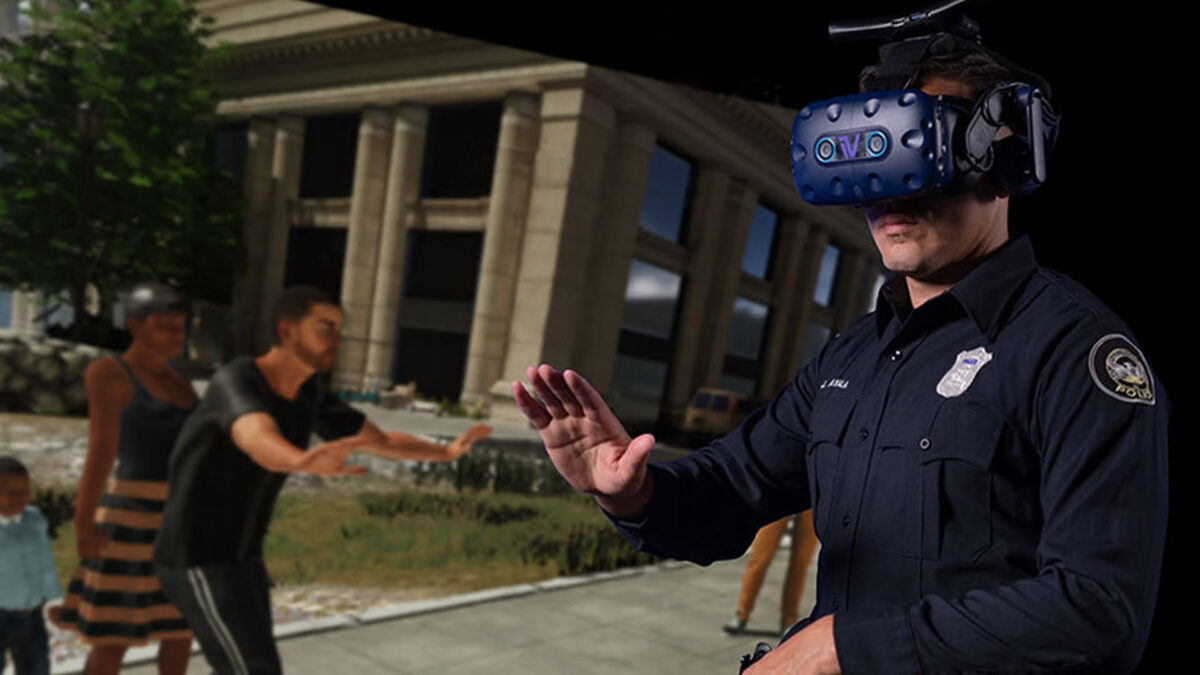US police officers practice dangerous operations in VR

Some police departments practice dangerous scenarios in virtual reality. What does it look like to prepare for an emergency with a VR headset?
The Tequesta Police Department's Emergency Operations Center is one of the first in the state of Florida to train operations in virtual reality. The VR training system includes hundreds of scenarios that emergency responders might encounter in everyday life. What's special about the VR training sessions: Participants never know what to expect.
Everyday police life in virtual reality: officers have to be ready for anything
Up to two officers become part of the virtual simulation via a VR headset, while an instructor monitors the situation on a PC. The approximately 800 preset virtual scenarios include simple shooting exercises, traffic controls, hostage situations, domestic violence incidents or search warrants.
Each scenario is unique because the location and type of incident, as well as the virtual protagonists, are customizable. At the beginning of the simulation, the prospective officers know little about the upcoming mission, just like in real life.
VR training: police practice with dummy weapons
Suspects can carry concealed weapons or be difficult to assess. This is because training instructors can influence the behavior of virtual persons and add characteristics such as "alert," "sad," or "drunk" or control their reactions in real-time.
Part of the VR training system are dummy weapons equipped with tracking devices that mimic those actually used by the police. A flashlight and a canister of pepper spray - without active ingredients, of course - are also included with the equipment. For security reasons, the officers are not allowed to bring real weapons or other duty equipment into the training room and are patted down beforehand.
Analysis options like in professional sports
The system projects the trainees' field of vision onto a screen and records it. This means that every exercise can be observed live and then analyzed. Thanks to the eye tracking of the HTC Vive Pro Eye, the officers can even see their exact viewing angles during the analysis.
“There’s countless scenarios, and what’s great about it is, every scenario is going to be different,” says Chief of Police Gus Medina. “It’s live and interactive based on how you’re handling that situation.”
Medina says the analysis is similar in scope to modern professional sports. “You look at sports, there are so many cameras. They capture things that the eye doesn’t. It gives us the ability as observers of this to say, ‘You could have done that a little better,’ or ‘Did you see this?’”
Officers in Europe are also using VR training. Swiss police practice emergencies in VR at the "Fusion Arena" VR arcade in Zurich's Letzipark, and German police officers even investigate crime scenes in VR.
Police pay for VR training with drug money
Tequesta's police station VR training system was developed by InVeris Training Solutions. The company provides immersive training simulations for military, police or commercial shooting ranges. The cost of the Tequesta Police Station system is about $62,500.
U.S. taxpayers, however, are not footing the bill. The state of Florida has a special fund that pays for equipment and services for law enforcement agencies. The fund is fed by money seized from drug offenses or other criminal activity.
Note: Links to online stores in articles can be so-called affiliate links. If you buy through this link, MIXED receives a commission from the provider. For you the price does not change.